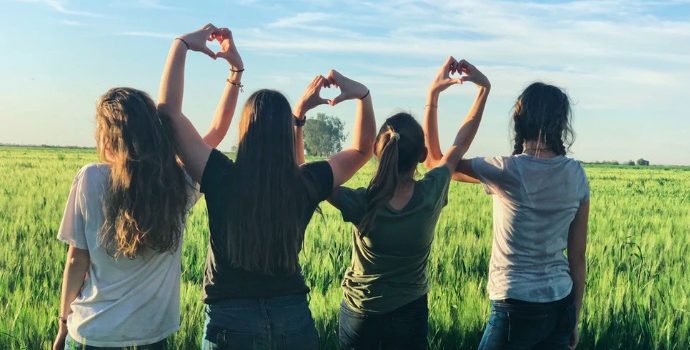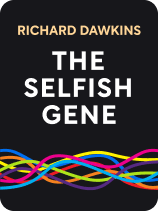

This article is an excerpt from the Shortform book guide to "The Selfish Gene" by Richard Dawkins. Shortform has the world's best summaries and analyses of books you should be reading.
Like this article? Sign up for a free trial here .
What is group selection? Is it the same as natural selection or is it a unique concept?
Group selection is a type of natural selection that applies to groups. Individuals may be altruistic towards one another, but it is for the good of a group of animals surviving and passing on their genes.
Read more about group selection and what it looks like.
Selfishness, Altruism, and Group Selection
While the driving force behind biology may be genes attempting to replicate, in modern times many must do so through the behaviors of their hosts. Behavior is how scientists describe specific actions that creatures take. A behavior is something quick and definite, so only animals can really be said to have them—some plants do move, but not in a fast or purposeful way.
Selfish behaviors in nature are easy to explain: Animals would naturally be expected to behave in ways that benefit themselves at the expense of others, given that the purpose of life is to survive and reproduce. However, altruistic behavior—helping others at a cost to oneself—seems counterintuitive.
One possible explanation for altruistic behavior is group selection: the idea that natural selection acts on groups of creatures, rather than on the individual level. While the commonly accepted theory today is that individuals compete for the ability to reproduce, group selection says that animals will instinctively act for the good of their local population, or even their entire species. If true, it would make altruistic behavior very easy to explain; risking oneself to help others of one’s species would then be the default, not the exception.
However, group selection is a fatally flawed theory. There are many ways to rebut it, but the simplest is to recognize that a population of altruistic individuals can be easily exploited by a selfish one. The selfish individual will accept all the help that other members of the population offer, while taking on no risks or costs to itself. Therefore, a selfish individual in an altruistic population will inevitably be more successful than the average creature in that population.
That selfish creature would quickly spread its genes—and therefore its selfishness—until a large portion of the population turns selfish. In other words, the individual will succeed at the expense of the group, and therefore group selection can’t be true.
Group Altruism and the Evolution of Culture
Many types of animals move, or even live, together in groups. Some advantages of this are obvious. For example, prey animals gain some protection from predators by living in groups. Meanwhile, predators like hyenas can bring down much larger prey by working together, so it benefits them all even though they have to share the food.
Another example is birds, many of which fly in formation and switch leaders frequently to reduce turbulence and make travel less tiring. However, birds have also been observed giving alarm calls to warn of predators, at some risk to themselves. This apparent act of altruism may ultimately be an act of selfishness—in fact, considering the selfish gene theory, it must be.
By the simple truth of natural selection, we can infer that giving that alarm call is more beneficial to the individual’s genes than not giving it would be. There are any number of possible reasons for this.
For instance, if a bird simply flew away upon spotting a predator, it would lose the advantages of living in a flock. If it froze and hid, but the rest of the flock kept moving around and making noise, that would draw the predator closer to the individual anyway. Therefore, it would be best to call a quick warning so the entire flock can hide. Also, there’s the simple likelihood that by taking a small risk to itself, the individual giving the call can protect many of its relatives. Finally, we can infer that if one of these birds calls to warn the others, that kindness will be repaid later by the others.
This is one form of reciprocal altruism: Two or more animals showing each other mutual altruism. Another common example is communal grooming. This example is especially interesting because there is a delay between one act of altruism and the act being repaid—pulling a harmful parasite off another individual doesn’t help you until you have a parasite to be pulled yourself.
The cost of grooming another member of the population is minuscule, but it’s still greater than zero. Therefore, among species that participate in communal grooming, there must be greater benefit than cost for doing so. One possible explanation is that members of the population evolved the ability to hold a “grudge”; that is, they refuse to groom selfish individuals who don’t groom others. This would naturally drive down the number of selfish individuals as they fall victim to parasites.
Ideas Spread Like Genes
Interestingly, ideas and behaviors can be observed to spread through populations and evolve much like genes do. Certain songbirds, for example, are known to learn their songs by imitating birds around them, rather than having them coded in by genes. However, sometimes birds will make a mistake and give rise to a new song. That song, in turn, is picked up by others and spreads throughout the population. If the replicator unit of biology is the gene, then the replicator unit of ideas could be called the meme—from the Greek mimema, meaning “that which is imitated.”
Among humans, the spread of ideas is more pronounced and much easier to recognize. A catchy song is a type of meme, as is a popular slogan or a political stance. God is one of the most successful memes in all of history—while it’s not clear how the idea of God originated in the “meme pool,” so to speak, it has been spread by stories, songs, art, and rituals to nearly every part of the world for thousands of years.
Culture and memes don’t seem to have any inherent survival value. It’s more likely that they’re side effects of group-focused evolutionary traits such as those discussed at the beginning of this section.

———End of Preview———
Like what you just read? Read the rest of the world's best book summary and analysis of Richard Dawkins's "The Selfish Gene" at Shortform .
Here's what you'll find in our full The Selfish Gene summary :
- Why organisms don't matter, only genes do
- How all life forms begin with a replicating molecule
- How species need to balance aggression and pacifism to survive






